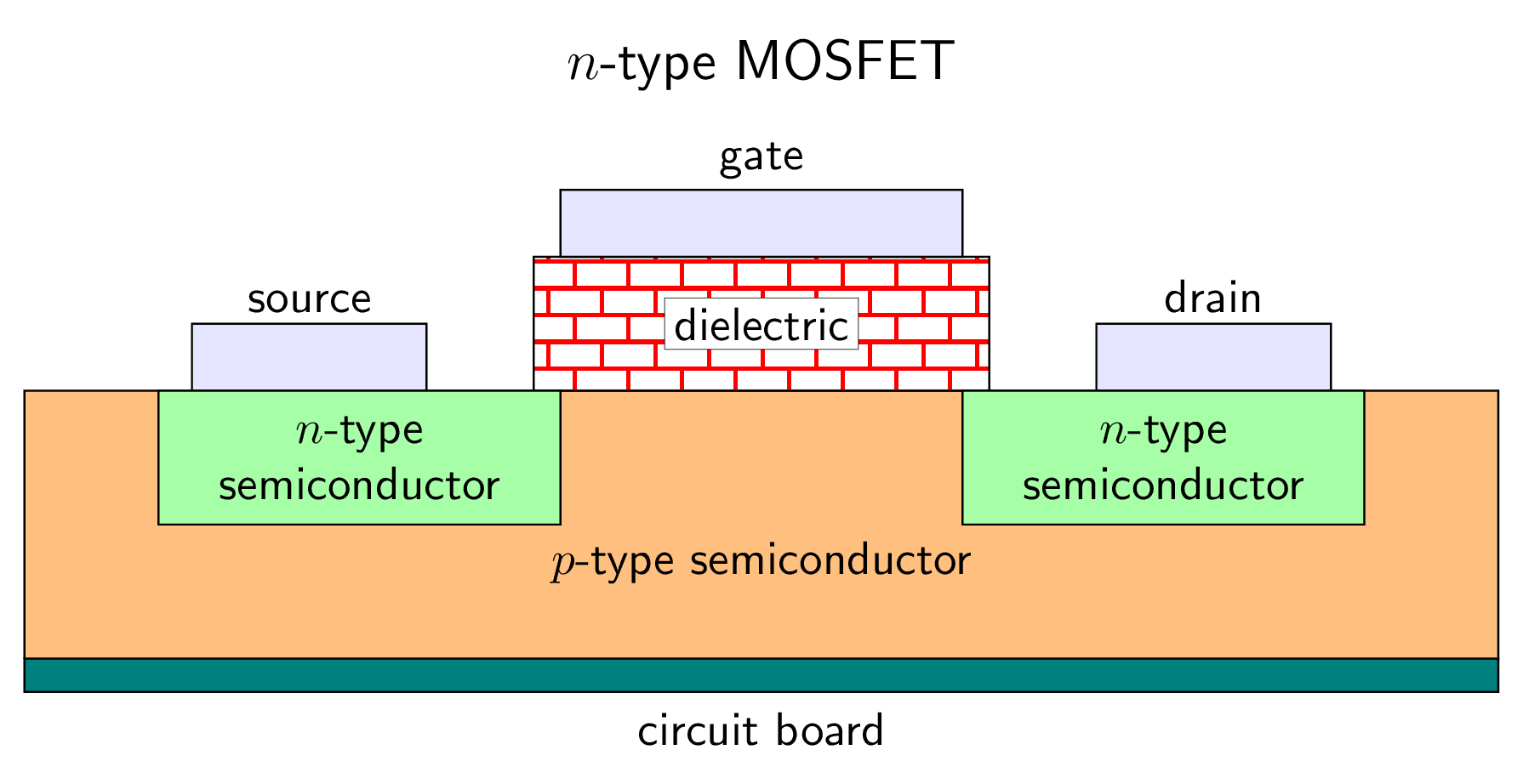MOSFET
The metal-oxide-semiconductor field-effect transistor, or MOSFET for short, is the most frequently manufactured device in history, with close to 10^23 MOSFETs produced since 1960. As the basic building block of almost all modern electronics, it revolutionized the world economy and triggered our ascent into the information age.

Download
Code
mosfet.typ (68 lines)
mosfet.tex (24 lines)